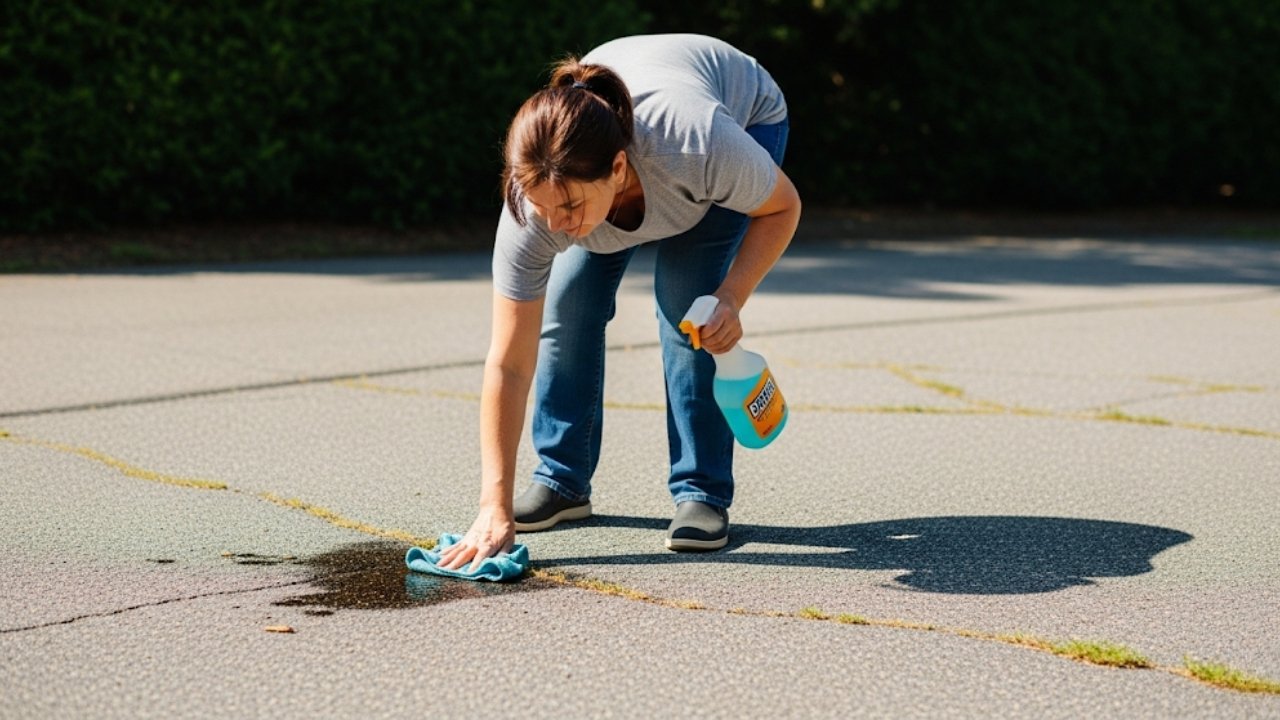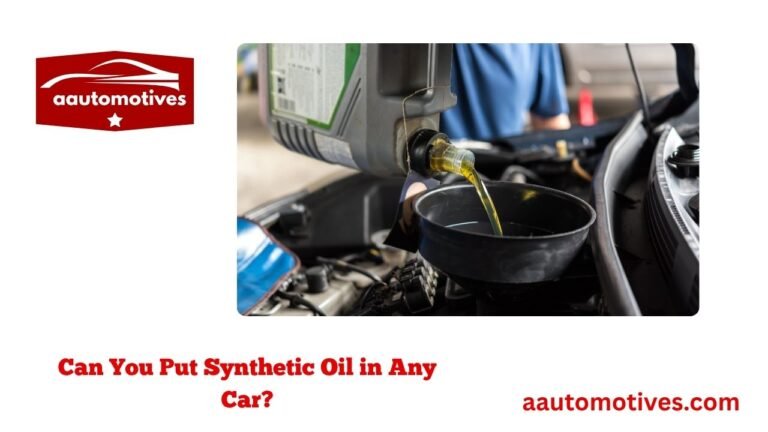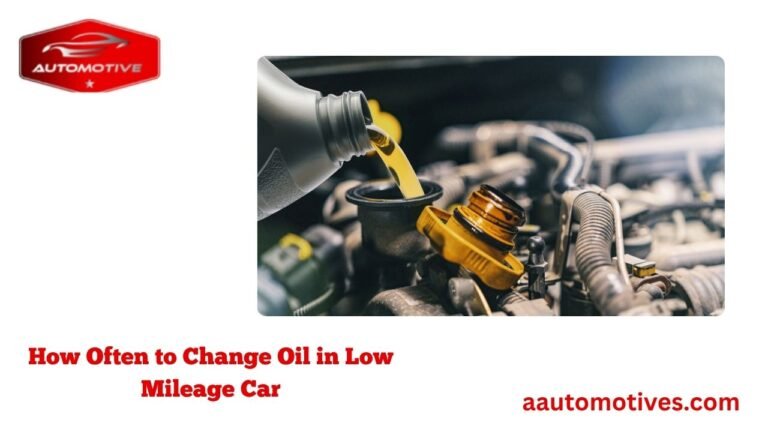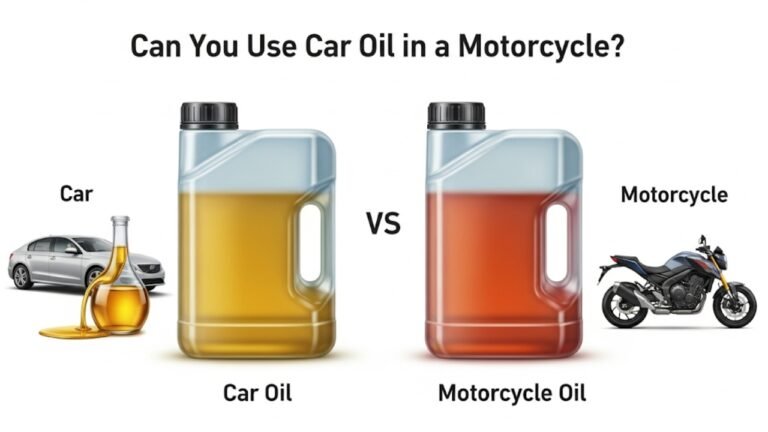How Do You Remove Car Oil from Driveway?

Oil stains on the driveway—yep, we’ve all been there. One minute your car’s parked like usual, and the next, you notice a dark patch forming under it. It’s frustrating, messy, and a total eyesore. You might’ve tried rinsing it with water or scrubbing it with some soap, only to realize that stuff’s tougher than it looks.
Whether it’s fresh or old, removing car oil from your driveway isn’t impossible. But it does take the right steps and some patience. In this guide, we’ll walk you through how do you remove car oil from driveway with effective, DIY-friendly methods that won’t break the bank. Think of this as your go-to plan for getting your concrete or pavers looking fresh again—just like that first day after installation.
In This Article
- 1 Why Car Oil Stains Are So Hard to Remove
- 2 First Thing First: Assess the Oil Stain
- 3 Basic Supplies You’ll Likely Need
- 4 Method 1: Use Cat Litter for Fresh Spills
- 5 Method 2: Dish Soap and Boiling Water
- 6 Method 3: Baking Soda and Vinegar Combo
- 7 Method 4: Commercial Degreasers for Stubborn Stains
- 8 Method 5: Pressure Washing
- 9 Tips to Prevent Future Oil Stains
- 10 Quick Summary: Methods at a Glance
- 11 Method 6: Try a Poultice Paste for Deep Concrete Stains
- 12 Method 7: Enzyme-Based Oil Removers (Bio-Remediation)
- 13 Don’t Make These Common Mistakes
- 14 Real Talk: My First Time Cleaning an Oil Stain
- 15 Helpful Bullet Tips to Remember
- 16 FAQs: Removing Car Oil Stains from Driveways
- 16.1 ❓1. How do you remove car oil from driveway if it’s years old?
- 16.2 ❓2. Can I use WD-40 to clean oil stains?
- 16.3 ❓3. Will oil stains go away on their own over time?
- 16.4 ❓4. Is it better to use hot or cold water for cleaning oil?
- 16.5 ❓5. Can I use laundry detergent for oil stains?
- 16.6 ❓6. Will pressure washing alone remove oil?
- 16.7 ❓7. How can I remove oil from brick pavers?
- 16.8 ❓8. What’s the safest option if I have pets or kids?
- 17 Final Thoughts: Be Proactive and Patient
Why Car Oil Stains Are So Hard to Remove

It’s not just about appearance either. An oil-stained driveway can hurt property value, make you look careless to guests, or even lead to slippery patches, which are a hazard in rainy conditions. Knowing how do you remove car oil from driveway can save you from long-term damage, and frankly, embarrassment.
First Thing First: Assess the Oil Stain
Before you jump into solutions, look at the size and age of the stain. This helps you pick the right method.
✅ Ask yourself:
-
Is the oil stain fresh or old?
-
How large is the spill?
-
What surface are you working with (concrete, asphalt, pavers)?
-
Did you already try cleaning it?
Once you know what you’re dealing with, you can choose the best route. We’ll go over several methods—some for light stains, others for deep or stubborn ones.
Basic Supplies You’ll Likely Need
Most of the tools you need are already lying around your home. If not, they’re cheap and easy to find at your local hardware store.
Essential Supplies:
-
Cat litter (non-clumping)
-
Dish soap or degreaser
-
A stiff-bristle brush
-
Baking soda
-
White vinegar
-
Pressure washer (optional)
-
Old towels or paper towels
-
A plastic scraper
These items work wonders. And yes—you don’t always need fancy chemicals. We’ll cover both natural and commercial methods so you can choose what suits you.
Method 1: Use Cat Litter for Fresh Spills
If you just noticed the oil patch—lucky you. Fresh spills are a breeze compared to old ones.
Steps:
-
Blot the oil with paper towels. Don’t rub—just gently press.
-
Pour non-clumping cat litter over the stain. Let it sit for at least 30 minutes, or overnight for better results.
-
Use a stiff broom to grind it in slightly.
-
Sweep it up and inspect the area. Repeat if necessary.
Cat litter works because it absorbs oil like a sponge. It’s cheap, accessible, and ideal for first responders (aka car owners who catch leaks early!).
Method 2: Dish Soap and Boiling Water
For light stains that linger after using cat litter, turn to your kitchen. Simple dish soap like Dawn, paired with boiling water, does the trick.
Directions:
-
Pour a good squirt of dish soap directly onto the stain.
-
Use a stiff brush to scrub in circles, applying elbow grease.
-
Carefully pour boiling water over the area.
-
Scrub again, then rinse with a hose.
It’s not magic, but it’s effective. The dish soap breaks down grease while hot water helps lift it out of the concrete’s pores.
Method 3: Baking Soda and Vinegar Combo
If you love natural cleaning hacks, this one’s for you. Baking soda and vinegar fizz up to dissolve oil and grime.
What to Do:
-
Sprinkle baking soda generously over the oil stain.
-
Spray or pour white vinegar until it starts bubbling.
-
Let it sit for 20–30 minutes.
-
Scrub with your brush and rinse with water.
This method’s safe for pets, kids, and the planet. And yes, it smells a little funky—but your driveway will thank you.
Method 4: Commercial Degreasers for Stubborn Stains
Sometimes, natural tricks don’t cut it. If you’ve got years-old stains, you’ll need something stronger. Try a commercial oil stain remover like:
| Product Name | Type | Best For |
|---|---|---|
| Oil Eater® | Degreaser | Deep concrete stains |
| Pour-N-Restore® | Pull-up paste | Old, dry oil patches |
| Simple Green® | Eco-friendly | Light and medium stains |
| Terminator-HSD | Bio-remediator | Long-term enzyme-based care |
Just follow the instructions on the label. These products are powerful—just make sure to wear gloves and eye protection.
Method 5: Pressure Washing
If none of the above works, or you just want a deep clean, go for a pressure washer. It’s not just for patios and decks!
How to Use:
-
Pre-treat the stain with degreaser or soap.
-
Let it sit for 15–20 minutes.
-
Fire up the pressure washer. Keep it at a 45° angle, moving side to side.
-
Use a high-pressure nozzle (at least 2000 PSI) for best results.
Be careful with asphalt—it’s softer than concrete and might erode under strong pressure. Always test a small spot first.
Tips to Prevent Future Oil Stains
Okay, so now your driveway’s clean. Great. But how do you keep it that way?
Here are some simple tips:
-
Park over a drip tray or oil mat if your car leaks.
-
Fix oil leaks promptly—they won’t get better on their own.
-
Seal your driveway every 1–2 years to block oil from soaking in.
-
Keep cat litter or baking soda on hand for quick cleanup.
Quick Summary: Methods at a Glance
| Method | Best For | Eco-Friendly? | Cost |
|---|---|---|---|
| Cat Litter | Fresh spills | ✅ | Low |
| Dish Soap + Boiling Water | Light stains | ✅ | Very Low |
| Baking Soda + Vinegar | Natural cleaning | ✅✅ | Very Low |
| Commercial Degreasers | Old and stubborn stains | Depends | Medium |
| Pressure Washing | Deep, widespread stains | ✅ | High (if renting) |
Method 6: Try a Poultice Paste for Deep Concrete Stains
Ever tried pulling out a wine stain from a couch? That same strategy can work for concrete—just with different materials. Enter the poultice paste method.
This works well when the stain is deep-set and other cleaning tricks failed. You’re basically applying a paste that draws out the oil like a sponge.
What You’ll Need:
-
A degreaser (or acetone)
-
Absorbent material (flour, talcum powder, or baking soda)
-
Plastic wrap
-
Tape
Instructions:
-
Mix your degreaser with the powder until it becomes a thick paste.
-
Spread the paste over the stain. It should be about ¼ inch thick.
-
Cover it with plastic wrap and tape down the edges.
-
Let it sit for 24 hours, then remove and rinse.
This method works like magic—especially for older car oil stains that have soaked into porous concrete. The paste “pulls” the oil up over time. Think of it like reverse osmosis for grease!
Method 7: Enzyme-Based Oil Removers (Bio-Remediation)
Let’s get nerdy (just for a second). There are products out there that use enzymes—tiny natural cleaners that break down hydrocarbons in oil. These are called bio-remediating cleaners.
They’re slow but effective. If you’re someone who prefers to “set it and forget it,” this is for you.
How It Works:
-
Sprinkle or spray the enzyme cleaner on the oil stain.
-
Leave it for several days (yes, days).
-
The microbes eat the oil molecules and turn them into CO₂ and water.
It’s like planting a garden of oil-eating bacteria. And yes—it’s safe, non-toxic, and environmentally friendly. Products like Terminator-HSD and Oil Lift fall in this category.
Don’t Make These Common Mistakes
When you’re figuring out how do you remove car oil from driveway, it’s easy to make a mess. Avoid these common mistakes to save time (and your sanity):
-
Using bleach: It may whiten your driveway—but it doesn’t remove oil.
-
Using a wire brush on asphalt: This will tear the surface and create more issues.
-
Letting oil sit too long: The longer it stays, the harder it is to clean.
-
Skipping protection: Always wear gloves, especially when using chemicals.
-
Power washing unsealed surfaces: Water can drive oil deeper into unsealed concrete.
Sometimes we try to “wing it,” especially when frustrated. But trust me—slow, steady, and strategic works better than brute force.
Real Talk: My First Time Cleaning an Oil Stain
Here’s a little story to keep things real.
Years ago, my dad’s old pickup started leaking oil—right in front of our family home. Being the “fix-it-yourself” kind, I grabbed the dish soap and started scrubbing with my mom’s kitchen sponge (yeah, big mistake).
The stain barely budged. Mom was mad about the ruined sponge. I was frustrated. It took me three days, a bag of cat litter, and some dawn-drenched hot water before I saw a difference.
The lesson? Don’t rush it. Use the right tools. And keep a game plan ready before the next surprise oil puddle hits.
Helpful Bullet Tips to Remember
Here’s a quick reference list to keep you sharp:
-
Absorb fresh oil first before applying cleaners.
-
Let cleaners sit long enough to break down oil.
-
Use natural methods if you have pets or kids.
-
Scrub with a stiff brush, not a soft one.
-
Always protect your hands and eyes with gloves and goggles.
-
Rinse thoroughly and repeat if needed.
These simple reminders can save you hours of work—and maybe even your driveway’s finish.
FAQs: Removing Car Oil Stains from Driveways
❓1. How do you remove car oil from driveway if it’s years old?
Use a commercial degreaser or poultice paste method. Let it sit for hours or even overnight. Pressure washing afterward helps lift the oil out fully.
❓2. Can I use WD-40 to clean oil stains?
Surprisingly, yes! WD-40 breaks down grease. Spray it on the stain, let it sit for 20 minutes, then scrub and rinse. Just don’t use it on asphalt too often—it can damage the surface.
❓3. Will oil stains go away on their own over time?
Nope. They may fade but won’t disappear without effort. Rain, sun, and foot traffic just push the oil deeper.
❓4. Is it better to use hot or cold water for cleaning oil?
Hot water works best. It softens and loosens oil. Combine it with dish soap for added effect.
❓5. Can I use laundry detergent for oil stains?
Yes, especially powder detergents like Tide. Mix it with warm water, scrub the area, and rinse well.
❓6. Will pressure washing alone remove oil?
Not always. It’s best used after applying a degreaser. Pressure helps lift loosened oil but doesn’t dissolve it on its own.
❓7. How can I remove oil from brick pavers?
Use a poultice or baking soda method. For deep stains, opt for enzyme-based cleaners that won’t damage the color or texture of pavers.
❓8. What’s the safest option if I have pets or kids?
Stick with baking soda, vinegar, or enzyme-based products. Avoid harsh degreasers with toxic ingredients unless the area is blocked off.
Final Thoughts: Be Proactive and Patient
Learning how do you remove car oil from driveway isn’t just about cleaning—it’s about restoring something that’s part of your home. A clean driveway says you care. It makes your house look more welcoming. And it honestly just feels better walking on a clean surface than over slippery grime.
It takes a little time. A little elbow grease. Maybe even a few mistakes. But it’s totally worth it.
If you keep the right tools handy and act quickly, you can stop oil stains before they become a problem. And next time your car leaks? You’ll be ready—not panicked.
So go ahead—roll up your sleeves. Your driveway’s about to get a fresh start.






